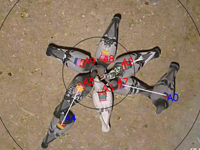Homepage for:
M. Nagy, G. Vasarhelyi, B. Pettit, I. Roberts-Mariani, T. Vicsek and D. Biro
Context-dependent hierarchies in pigeons,
Proceedings of the National Academy of Sciences of the United States of America
110(32), 13049-54 (2013)
ABSTRACT | FULL TEXT | SUPPLEMENTARY PDF
Hierarchical organization is widespread in the societies of humans and other animals, both in social structure and in decision-making contexts. In the case of collective motion, the majority of case studies report that dominant individuals lead group movements (1-5), in agreement with the common conflation of the terms "dominance" and "leadership". From a theoretical perspective, if social relationships influence interactions during collective motion then social structure could also affect leadership in large, swarm-like groups such as fish shoals and bird flocks (6-8). Here we use computer-vision based methods and miniature GPS tracking to study, respectively, social dominance and in-flight leader-follower relations in pigeons. In both types of behavior we find hierarchically structured networks of directed interactions. However, instead of being conflated, dominance and leadership hierarchies are completely independent of each other. Although dominance is an important aspect of variation among pigeons (9), correlated with aggression and access to food, our results imply that the stable leadership hierarchies in the air must be based on a different set of individual competences. In addition to confirming the existence of independent and context-specific hierarchies in pigeons, we succeed in setting out a robust, scalable method for the automated analysis of dominance relationships, and thus of social structure, applicable to many species (10). Our results, as well as our methods, will help to incorporate the broader context of animal social organization into the study of collective behavior.





